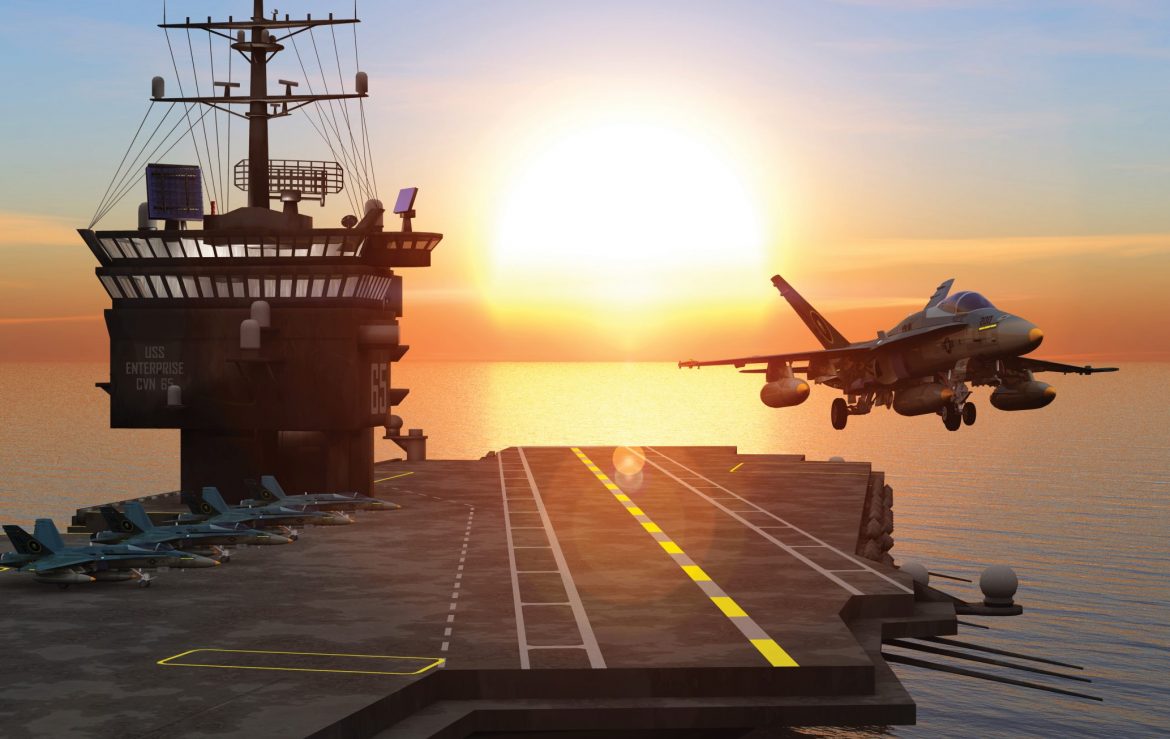Aircraft carriers are often regarded as ultimate power projection tools. In the past decades, it was predominantly the power of the United States (US) that was carried around the globe. The impressive full-length flat deck ships made Americans much less dependent on worldwide bases. Instead, they could park a fully equipped floating airbase close to any theatre of conflict, anywhere in the world. Nowadays, the US still has the largest fleet of carriers, but other states have (re)joined the club, making the maritime domain ever more crowded and in certain places, contested.
The aircraft carrier: a short history
The concept of aircraft carriers has been around for more than a century. In 1910, the first fixed-wing aircraft was launched from a US Navy cruiser. In the 1920s, a large number of flat deck ships was commissioned. These included the Japanese Hosho, the British HMS Hermes, the French Béarn and the American Lexington-class. World War II became their ultimate testing ground, showing both the new operational opportunities, but also the vulnerabilities and the massive losses that could occur when a carrier was attacked.
At the onset of the war, the Japanese had the largest and most sophisticated fleet, with ten aircraft carriers. Their attack on Pearl Harbor (1941) was launched from six aircraft carriers and involved around 360 Japanese aircraft. At the closing end of the war, it was the American’s turn to strike in the Pacific. Using carrier-borne aircraft, it brought down the two largest then-existing battleships, the Japanese Musashi in 1944 and the Yamato in 1945. In the European war theater, Britain was in the lead with seven carriers. While the ships were helpful in preventing German domination of the Mediterranean, Germany did manage to sink a number of British carriers with its superior submarines and battlecruisers. World War II marked the first time in history that sea battles were not decided by ships, but by aircraft. Ever since, aircraft, and aircraft carriers, have been key assets in the maritime domain.
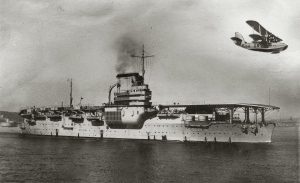
Innovations in aircraft carrier design
The design of aircraft carriers has changed significantly due to engineering and technological innovations. Aircrafts went from being propeller-powered to being jet-powered and became faster and heavier. To launch and land such aircraft, steam-powered catapult and arrestor gear were invented.
The advent of nuclear power made the US build nuclear-powered carriers (USS Nimitz). France was the only power following that example, which led to the nuclear-powered Charles de Gaulle. Another important early innovation was that of the optical landing system, which provided a constant glidepath correcting for rough seas. A more recent innovation, introduced in the American Ford-class carriers, is the electro-magnetic catapult, replacing the steam-powered catapult.
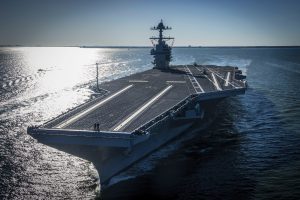
Global power competition leads to growing numbers of aircraft carriers
The US, France and India are the only powers that have continuously kept carriers in operation for the past fifty years. Of those, only the US has been truly able to project power globally. Others are now (re)joining the club, including China, the UK and Japan.
The US: the Ford-class headache and the Lightning carrier concept
Currently, the US Navy operates 11 nuclear-powered aircraft carriers (10 Nimitz-class, 1 Ford-class). Its aircraft carriers are by far the world’s largest. The Ford-class carriers are supposed to replace the Nimitz-class ships planned for retirement by the mid-2030s. The lead ship of the Ford-class, the 90,000-ton USS Gerald R. Ford has been suffering from technical issues and delays. Coming at the procurement costs of $13.3 billion, it was finally commissioned in 2017 and is expected to become operational in 2022.
The construction of this first of the Ford-class has been a headache file for the US. Last year, this led to the launch of a Future Carrier 2030 Task Force to study whether the US Navy should stick with the design, but the study was halted by the Navy’s leadership, which was unwilling to raise uncertainty. The problems with the carriers and their current overstretch have put spotlights on the Navy’s 9 amphibious assault ships, which carry helicopters and “short take off and vertical landing” (STOVL) aircraft. These American ships are as large as other state’s designated aircraft carriers and play an important role in the new “lightning carrier concept”. The idea is that putting up to 20 of the F-35B, the STOVL variant, on these ships, as a good way to supplement the large-size carriers.
China: between ambition and budgetary prudence
The People’s Liberation Army Navy (PLAN) currently operates two aircraft carriers. A third one is nearing completion. China’s ambition was initially to have at least six carrier groups by 2035, four of them with nuclear-powered aircraft carriers. Technical and financial issues have reduced the ambition to having four carriers, none of them nuclear-powered, for now.
The national carrier construction program has nonetheless shown a steep learning curve. The first aircraft carrier, the Type 001 Liaoning, was constructed on an unfinished carrier from Ukraine. China’s second carrier, the Shandon, is a better version of the first carrier, but with the same design. The third carrier (Type 002) is expected to be more advanced, much larger and reportedly will also feature electromagnetic catapults. Despite the advancements, China’s carriers may face serious threats operating in its region, including the South China Sea, as other Asian powers have heavily invested in submarine fleets, some of them armed with sophisticated torpedoes and anti-ship missiles.
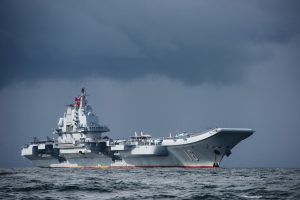
India: concerns about Indian Ocean security
India currently has only one operational aircraft carrier, the INS Vikramaditya. Aware of the increasingly precarious security situation in the Indian Ocean, it aims for three, even though budgetary pressures and technological difficulties are holding the Indian Navy back. At the end of the 1990s, India announced its ambition to produce its first home-built carrier, the Vikrant. Faced with delays, it is said to enter sea trials in early 2021 and is expected to be in service at the earliest in 2023.
For its third planned carrier, India has turned to more help from the UK and the US. It concluded a Carrier-Capability Partnership with the UK in 2019, in the same year that the US-India carrier-technology working group held its second session. The third carrier will not enter service before the 2030s.
Britain: rejoining the Great Powers and picking a fight with China?
In January 2021, Britain officially became an aircraft carrier power again, after having had a ‘carrier gap’ for the last ten years. British politicians are hailing this as a demonstration of the return of a Global Britain. Just days after the official Brexit, it is not entirely coincidence that the full carrier strike group of the new HMS Queen Elizabeth was announced to have reached “very high readiness”, meaning it can now be deployed within 5 days of notice. A second carrier, the HMS Prince of Wales, will most likely be operational by 2023.
The Brits closely cooperate with the US around their new carrier and are also focused on building a strong relation with India. Exercises with the HMS Queen Elizabeth included the formation of the largest concentration of 5th generation airplanes ever at sea, made up of US Marine Corps F-35Bs and Royal Navy F35s. The first deployment of the carrier is planned for later this year and will include the Indian Ocean and substantial interaction with India’s INS Vikramaditya. It is also expected to cruise through the South China Sea, a move that will most likely upset the Chinese.
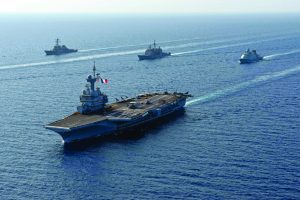
France: reaffirming its global status and its industrial base
The French national fleet’s flagship warship, aircraft carrier Charles de Gaulle, has long symbolized the French global reach and power. In December 2020, President Emmanuel Macron announced that its successor will also be nuclear-powered and is scheduled to replace France’s only carrier in 2038. Referred to for now as the ‘Porte-Avions de Nouvelle Generation’ (PANG), it will be much bigger than its predecessor and also be nuclear-powered and most likely using electro-magnetic catapults and having plenty of landing space for STOVL aircraft. It will be the most powerful capability in the EU.
France operates the second-largest Exclusive Economic Zone (EEZ) in the world and with this decision and the proposed ship, France’s objective is to remain a global player. It is also eager to maintain rare industrial knowledge in shipbuilding and nuclear power. Plus, the French aircraft carrier, given its nuclear strike capability, contributes to the country’s nuclear deterrent forces.
Vulnerable or value for money?
In the current global power dynamics, oceans are subject to growing international tensions. They might even become the most disputed parts of the world. The coming decades, the seas are to host a growing number of expensive aircraft carriers. Some critics suggest that these large decks are too vulnerable in a (future) age of hypersonic missiles, improved satellite capability, quiet submarines, anti-ship and other anti-aircraft weapons. But clearly, carriers remain of importance as status symbols and for the maintenance of a national military industrial base- thus also contributing to a state’s economy. Their operational value will nonetheless stand or fall with the quality of aircraft they host and with the protection they will receive from the other technologically advanced ships, submarines and systems that are part of their carrier group. ●
» By: Saskia Maria van Genugten
(A Senior Research Fellow in the MENA Peace & Security Prograamme of the Emirates Diplomatic Academy (EDA) in Abu Dhabi)


